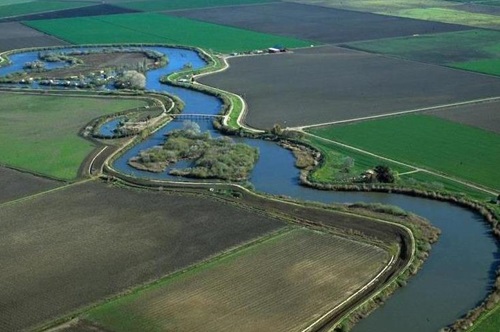By Rich Atwater, Executive Director, Southern California Water Committee
Everyone has a weak spot. For California, it’s the Sacramento-San Joaquin Delta – the heart of our state’s water supply.
Someone once said a weakness can keep you from advancing or developing as much as you could, and the best way to overcome it is to find another way to approach it. For the deteriorating Delta, that approach is California WaterFix which will create a more secure water supply by delivering it through a modern pipeline.
To understand why California WaterFix is critical for 2016, we need to take a hard look at the circumstances we face in order to prepare for our water future.
Two-thirds of Southern California’s water supplies come from the Sierra Nevada Mountains filling rivers and streams that flow to the Delta. Currently, the fresh water that moves through the Delta is protected by fragile dirt levees that are vulnerable to earthquakes and natural disasters. This is a problem California can’t afford to endure. Why? Our state’s economy and water supplies for 26 million residents, businesses and farms all depend on water that flows through the Delta.
This winter presented countless opportunities to capture and store water to utilize during dry periods, unfortunately we missed many of these opportunities. Instead of taking advantage of storms, we were unable to make significant gains on the drought due to deteriorating infrastructure and environmental restrictions. Recent data collected from the Department of Water Resources found that had California WaterFix been in place, an estimated 486,000 acre-feet of water could have been captured, enough to supply 3.6 million people for a year.
Southern California acted swiftly in response to the drought in the 90s and built the Diamond Valley Lake – now considered the region’s largest reservoir. The Metropolitan Water District of Southern California constructed the reservoir to meet the region’s long-term supply needs by providing the region with more reliable water storage and to bolster its emergency supplies. This investment, along with a serious push for conservation, have put Southern California in a decent position to endure the current drought.
Today, the state of California’s water delivery system requires a statewide response. Current circumstances and recent data both point to the need for California WaterFix, which promotes supply reliability, supports drought protection and prepares for climate change. We can no longer afford to be held back by crumbling infrastructure – the consequences are too high and the risks are too great.
Water is the lifeline of our state’s economy, and as California enters a fifth year of drought conservation efforts alone won’t solve our state’s water woes. We need California WaterFix, which will complement local supply projects, to overcome our weak spot and protect our most precious natural resource.
To learn more about California WaterFix, click here.
